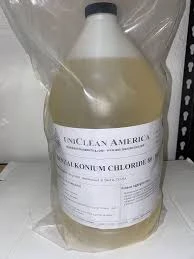poly aluminium chloride for drinking water
Poly Aluminium Chloride for Drinking Water Treatment
Water is essential for life, and its quality is crucial for human health. As the demand for safe drinking water continues to rise due to population growth and industrialization, the importance of effective water treatment methods cannot be overstated. One such method involves the use of Poly Aluminium Chloride (PAC), a water-soluble chemical compound that has gained popularity in the water treatment industry.
What is Poly Aluminium Chloride?
Poly Aluminium Chloride is a coagulant widely used in the treatment of drinking water and wastewater. It is a type of inorganic polymer, which typically contains aluminum in addition to chloride ions. PAC is produced by the hydrolysis of aluminum chloride in conjunction with a base, resulting in a product that is less corrosive and more effective in coagulating impurities in water than traditional coagulants like aluminum sulfate.
Mechanism of Action
The primary function of Poly Aluminium Chloride in water treatment is to facilitate the coagulation and flocculation processes. When PAC is added to water, it dissociates into aluminum ions, which react with dissolved organic matter and particulate matter within the water. These reactions lead to the formation of microflocs, which then aggregate to form larger flocs. The larger flocs are more easily removed through sedimentation or filtration, effectively clearing the water of contaminants such as suspended solids, pathogens, and other pollutants.
Advantages of Using PAC
1. Higher Efficiency PAC is known for its higher coagulant efficiency compared to traditional coagulants. This means that lower doses of PAC are required to achieve the same or better results in water purification, making it more economical for treatment facilities.
2. Broader pH Range One of the significant advantages of PAC is its effectiveness across a broader pH range. Unlike traditional coagulants, PAC performs well in both acidic and alkaline conditions, which enhances flexibility in various water sources.
poly aluminium chloride for drinking water

3. Lower Residual Aluminum Traditional coagulants often leave a higher residual concentration of aluminum in treated water. PAC, on the other hand, typically results in lower residual aluminum levels, reducing potential health risks associated with excessive aluminum intake.
4. Improved Water Quality Using PAC can lead to clearer water with improved taste and odor. Its ability to remove more impurities means that the treated water can meet strict quality standards set by health organizations.
5. Easier Handling and Storage PAC is generally easier to handle and store compared to other coagulants. It is less corrosive and poses fewer environmental risks, making it a safer option for both operators and the environment.
Environmental Considerations
The use of PAC in water treatment is generally considered safe, but it is crucial to follow proper dosage guidelines to minimize potential environmental impacts. The aluminum content in PAC should be managed to ensure that aluminum levels in treated water fall within safe limits. Moreover, the residual sludge generated from the coagulation process must also be handled appropriately to minimize ecological disruption.
Regulatory Aspects
Regulatory bodies, including the World Health Organization (WHO) and the Environmental Protection Agency (EPA), have established guidelines for the use of coagulants in drinking water treatment. While PAC is widely accepted, it is integral for water treatment facilities to adhere to local regulations and standards to ensure public health safety.
Conclusion
In summary, Poly Aluminium Chloride is a vital agent in the treatment of drinking water, providing numerous advantages that enhance the quality and safety of potable water supplies. Its efficiency, versatility, and lower environmental risks make it a preferred choice over traditional coagulants, supporting the growing need for effective and sustainable water treatment solutions. As communities strive to secure safe drinking water for their populations, the role of PAC will continue to be pivotal in addressing water quality challenges in the 21st century.
-
Dodecyldimethylbenzylammonium Chloride: High-Purity DisinfectantNewsAug.30,2025
-
2-Phosphonobutane-1,2,4-Tricarboxylic Acid: Scale & CorrosionNewsAug.29,2025
-
Premium Isothiazolinones | Broad-Spectrum Biocidal SolutionsNewsAug.28,2025
-
LK-319 Special Scale And Corrosion Inhibitor For Steel Plants: Advanced Solutions for Industrial Water SystemsNewsAug.22,2025
-
Flocculant Water Treatment: Essential Chemical Solutions for Purification ProcessesNewsAug.22,2025
-
Isothiazolinones: Versatile Microbial Control Agents for Industrial and Consumer ApplicationsNewsAug.22,2025





